Top 8 Eco-Friendly Air Quality Solutions for Healthier Indoor Spaces
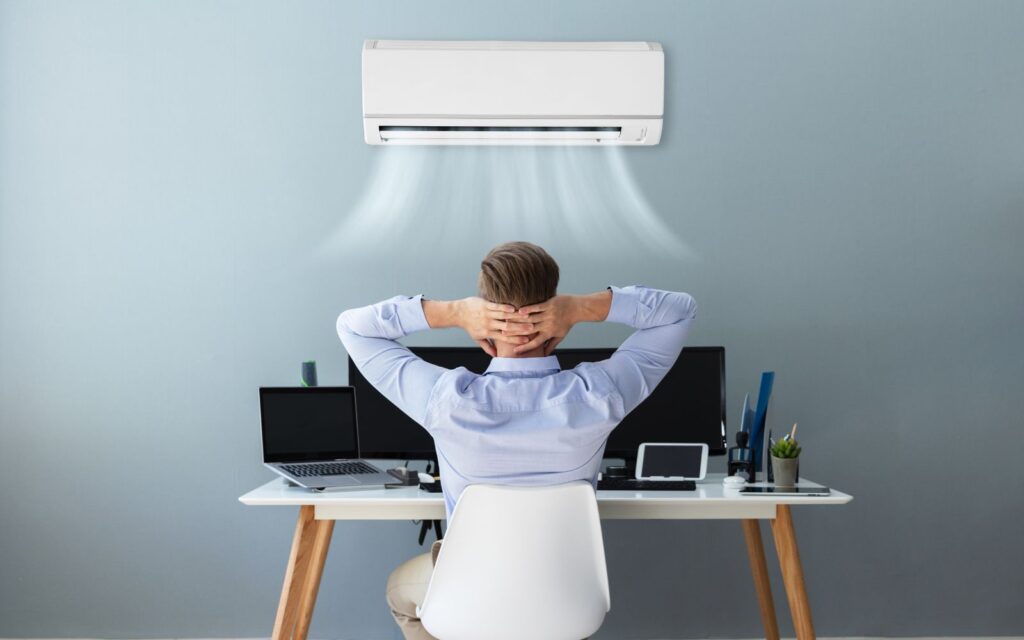
Indoor air quality plays a crucial role in our health and overall well-being. Poor indoor air quality can lead to allergies, respiratory issues, and other health problems.
Many traditional air cleaners and cleaning products contain harmful chemicals that can worsen indoor air pollution instead of solving it.
The good news? There are sustainable ways to improve indoor air quality while reducing greenhouse gas emissions and your carbon footprint.
In this guide, we’ll explore eco-friendly air quality solutions that help you breathe cleaner air while being kind to the environment.
Key Takeaways
- Eco-friendly air purifiers and air filters help remove airborne pollutants.
- Indoor plants absorb air pollutants and improve air quality.
- Increasing ventilation with open windows reduces indoor air pollutants.
- Eco-friendly cleaning products lower exposure to volatile organic compounds (VOCs).
- Energy-efficient appliances and ventilation systems enhance indoor air quality.
1. Use Eco-Friendly Air Purifiers and Air Filters

Many air purifiers release harmful chemicals or use too much energy. Instead, opt for eco-friendly air quality solutions that use minimal power while effectively removing other contaminants.
Best Options:
- HEPA Air Filters – Capture airborne pollutants like dust, pet dander, and pollen.
- Activated Carbon Filters – Absorb volatile organic compounds (VOCs) and odors.
- UV-C Light Purifiers – Kill bacteria and viruses without harmful chemicals.
- Bamboo Charcoal Bags – A natural and reusable way to remove air pollutants.
Look for energy-efficient appliances with an Energy Star rating to minimize carbon dioxide emissions.
2. Add Air-Purifying Houseplants

Houseplants enhance the beauty of your home and reduce indoor air pollutants. Some plants naturally absorb organic compounds (VOCs), carbon monoxide, and carbon dioxide, improving indoor air quality.
Best Plants for Good Indoor Air Quality:
- Areca Palm – Adds moisture and filters airborne pollutants.
- Spider Plant – Absorbs carbon monoxide and formaldehyde.
- Snake Plant – Converts CO₂ into oxygen, perfect for nighttime.
- Peace Lily – Filters volatile organic compounds (VOCs) and mold spores.
You can protect your health and the environment by using sustainable ways to clean your indoor air.
3. Improve Indoor Air Quality With Proper Ventilation

Increasing ventilation is one of the simplest ways to improve indoor air quality. Indoor air pollutants accumulate without proper airflow, leading to poor indoor air quality.
Tips for Better Ventilation:
- Open windows for at least 15 minutes daily to let in fresh air.
- Use ventilation systems like exhaust fans in kitchens and bathrooms.
- Install air filters in your HVAC system to trap air pollutants.
- Consider an air conditioning unit with a built-in air cleaner.
Proper ventilation systems reduce indoor air pollution and help prevent mold growth.
4. Switch to Eco-Friendly Cleaning Products

Many traditional cleaning products contain harmful chemicals that release VOCs, increasing indoor air pollution. Switching to eco-friendly cleaning products is a great way to improve air quality without exposing yourself to toxins.
Best Natural Cleaning Products:
- Vinegar & Baking Soda – Remove grime and odors without chemicals.
- Essential Oils – Add a natural scent without artificial fragrances.
- Castile Soap – A gentle yet effective alternative for various surfaces.
- Lemon Juice – Acts as a natural disinfectant and odor eliminator.
Look for eco-friendly cleaning products that are labeled as non-toxic and biodegradable.
5. Reduce Indoor Humidity to Prevent Mold Growth
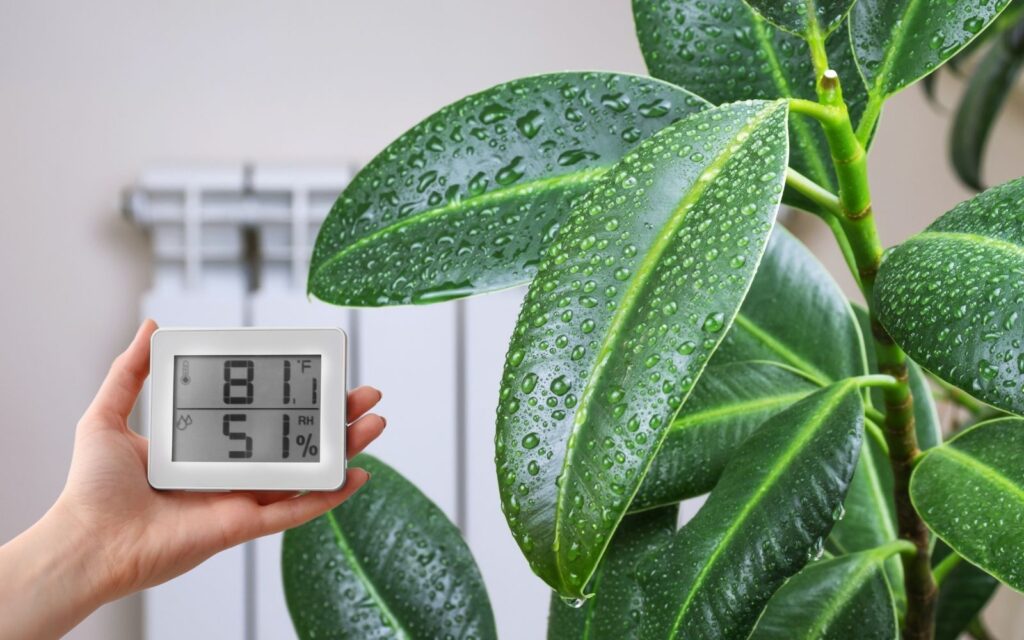
High humidity levels encourage mold growth, negatively impacting indoor air quality. Keeping moisture levels under control helps reduce indoor air pollutants.
Tips to Control Humidity:
- Use energy-efficient dehumidifiers to keep levels between 30-50%.
- Place bamboo charcoal bags in damp areas to absorb moisture.
- Open windows and use exhaust fans to improve ventilation systems.
- Fix leaks to prevent water accumulation.
Reducing humidity prevents mold growth and achieves good indoor air quality.
6. Choose Sustainable Materials for Indoor Spaces

Your furniture, flooring, and paint may release harmful chemicals into the air. Many home materials emit volatile organic compounds (VOCs), which lower air quality.
Best Eco-Friendly Materials:
- Bamboo & Cork Flooring – Sustainable and free from harmful chemicals.
- Low-VOC Paints – Reduce airborne pollutants indoors.
- Solid Wood Furniture – Avoids other contaminants found in particleboard.
- Organic Cotton & Wool – Ideal for bedding and upholstery.
Choosing sustainable ways to furnish your home improves air quality and creates a healthier indoor environment.
7. Reduce Your Carbon Footprint With Energy Efficiency

Your HVAC system, air conditioning, and transportation choices affect indoor air pollution and tailpipe emissions. Reducing fuel consumption and choosing energy-efficient appliances can lower carbon dioxide levels.
Eco-Friendly Energy Tips:
- Upgrade to energy-efficient HVAC systems.
- Use solar-powered air cleaners or ventilation systems.
- Maintain your air conditioning unit with routine maintenance.
- Reduce reliance on fossil fuels to lower tailpipe emissions.
Lowering your carbon footprint benefits both your indoor air and the global environment.
8. Simple Habits for Cleaner Indoor Air
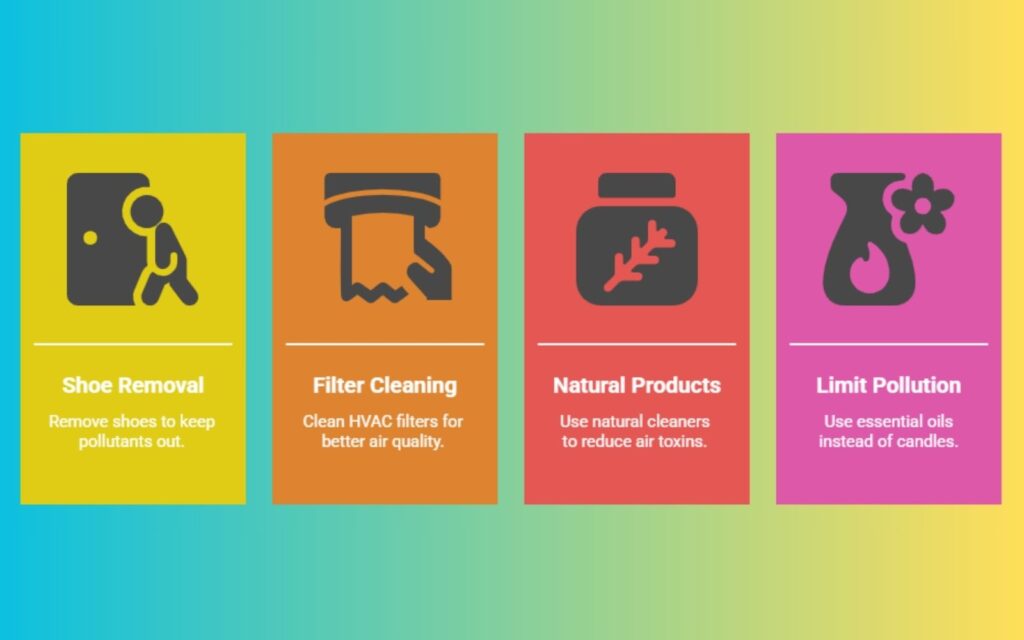
Sometimes, small changes can significantly impact indoor air quality. Adopting daily habits can help reduce indoor air pollutants effectively.
Easy Lifestyle Changes:
- Leave your shoes at the door to avoid bringing in dust and pollution.
- Regularly clean air filters in your HVAC system.
- Use natural cleaning products instead of synthetic cleaning products.
- Limit air pollution from candles and incense by using essential oils instead.
By making these minor adjustments, you can create a healthier indoor environment with cleaner air.
Summary
Improving indoor air quality doesn’t have to involve harmful chemicals or wasteful appliances.
Using eco-friendly air quality solutions, you can create a good indoor air quality environment while protecting your health and reducing air pollution.
Whether using air filters, ventilation systems, or natural cleaning products, these sustainable ways can make a lasting impact.
Frequently Asked Questions
What Are the Best Ways to Improve Indoor Air Quality Naturally?
Some of the best ways to enhance indoor air quality are to use air-purifying plants, use eco-friendly cleaning products, and increase ventilation with open windows.
How Does Ventilation Reduce Indoor Air Pollutants?
Proper ventilation systems remove airborne pollutants, bringing in fresh air while flushing out carbon dioxide and volatile organic compounds (VOCs).
Can Eco-Friendly Cleaning Products Improve Air Quality?
Yes! Traditional cleaning products release harmful chemicals, while natural cleaning products keep your home toxin-free.
How Do Air Filters Help with Air Quality?
HEPA and activated carbon filters trap airborne pollutants, improving air quality by reducing indoor air pollution.
What’s the Connection Between Energy Efficiency and Indoor Air Quality?
Using energy-efficient appliances reduces greenhouse gas emissions, tailpipe emissions, and carbon footprint, leading to cleaner indoor air and a healthier environment.

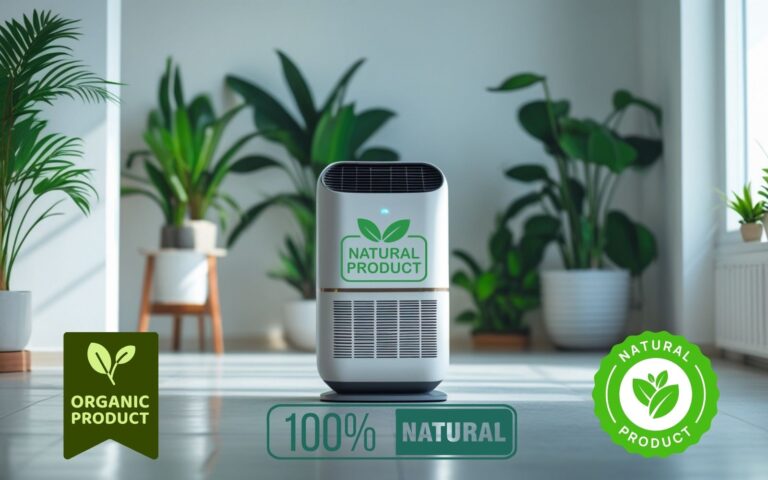

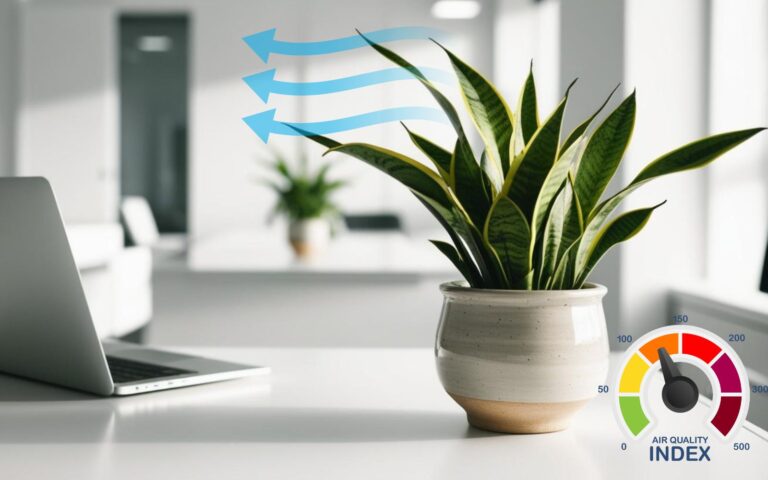


One Comment